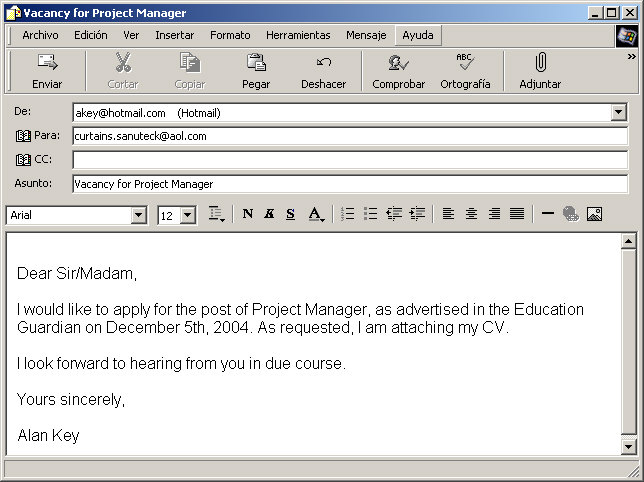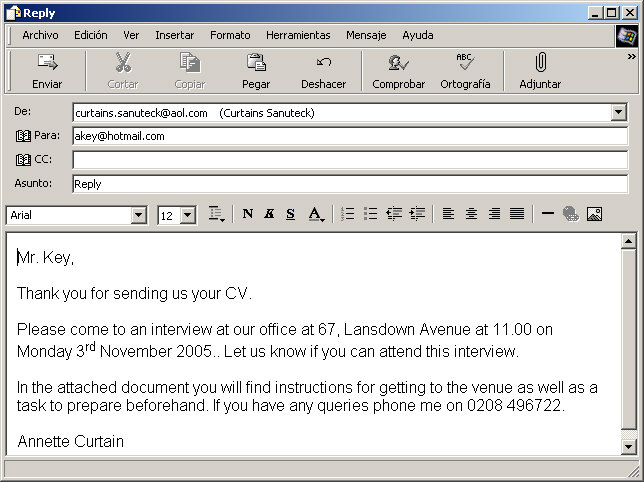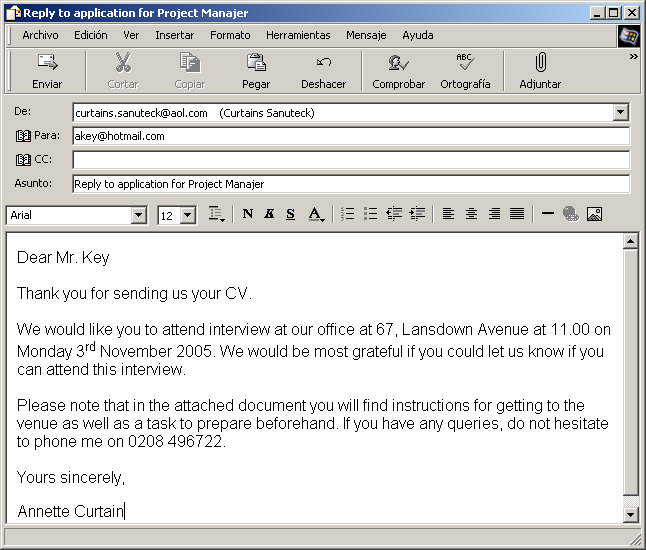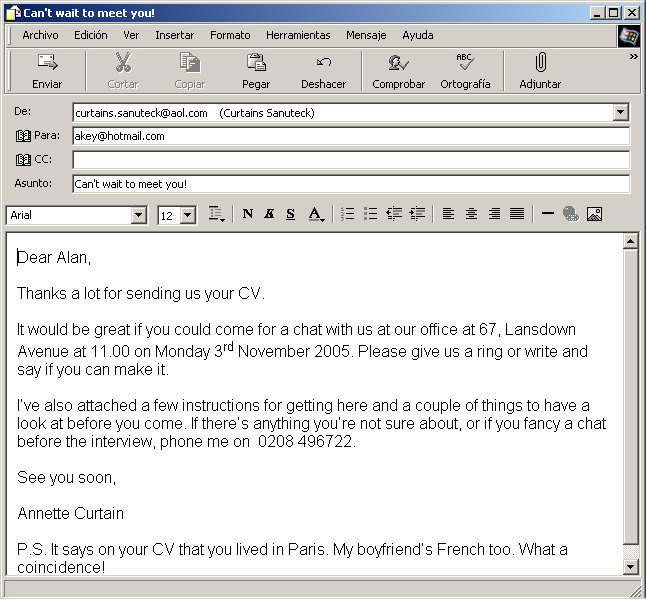 |
 |
![]() Read the following email. Why was is written?
Read the following email. Why was is written?
![]() Now read three responses to Alan’s email and decide which one is the best and
why the others are not suitable.
Now read three responses to Alan’s email and decide which one is the best and
why the others are not suitable.
![]() Use the following list as a guide when you write business emails.
Use the following list as a guide when you write business emails.
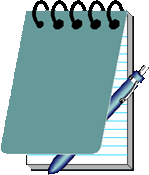 |
|
![]() Read a reply to Annette Curtain's email and choose the best expression from
the list.
Read a reply to Annette Curtain's email and choose the best expression from
the list.
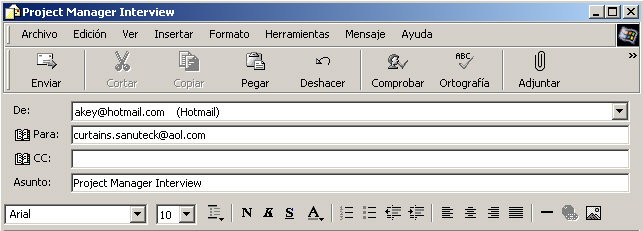
. |
|
![]() Now imagine that you are Annette Curtain and write a reply to Alan’s email.
You must use the following expressions in your email:
Now imagine that you are Annette Curtain and write a reply to Alan’s email.
You must use the following expressions in your email:
![]() Thank you for...
Thank you for...
![]() Would you be able to...?
Would you be able to...?
![]() I would appreciate it if you could...
I would appreciate it if you could...
![]() I look forward to...?
I look forward to...?
Don't forget to use the Business Email Checklist above.
|
|
|



![]() Match each point below with the reason why it is useful. Follow the example.
Match each point below with the reason why it is useful. Follow the example.
|
|
a)
It looks like you are shouting at the reader.
b) Your message will be clear and to the point. People who read a lot of emails every day usually dislike scrolling down long emails.(to scroll = desplazar). c) This makes the information clear and accessible. d) This gives the reader a good impression. e) It gives a professional image and tells the reader it’s the end of the message. f) If the subject line has impact, there is more chance of it being opened and read. g) Sometimes the spell check makes mistakes (eg. Your and you’re, theirs and there’s). You can also see if there is anything in the email that you want to change. h) Because they are easy to read. i) So that people can get in touch with you easily. j) People usually expect emails to be answered within 24 hours. If you’re very busy, send a reply saying that you have received their email and you will reply as soon as possible. |
|
|
|
|
La Mansión del Inglés. https://www.mansioningles.com
© Copyright La Mansión del Inglés C.B. Todos los derechos reservados.


